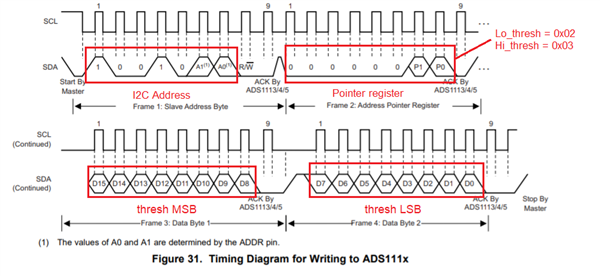Hello,
I'm kind of new to ADS1114 and wanted to sample an ADC value on continuous conversion mode.
I understand for that I need to set MSB of Hi_Thresh register and L_thresh register as 1 and 0 respectively.
However, I do not understand on how to change it? Is it in the Config register somewhere? I'm sorry for a silly question.
Also,
Does that mean that the output of ADS is sent to the MCU only if it acknowledges/reads the RDY pin. I do not understand that part.
Register values:
unsigned char buffer_Config_Reg[3] = {0x01, 0x80, 0xE1};
unsigned char buffer_Addr_Ptr_Reg[1] = {0x00};
Thanks in advance!



